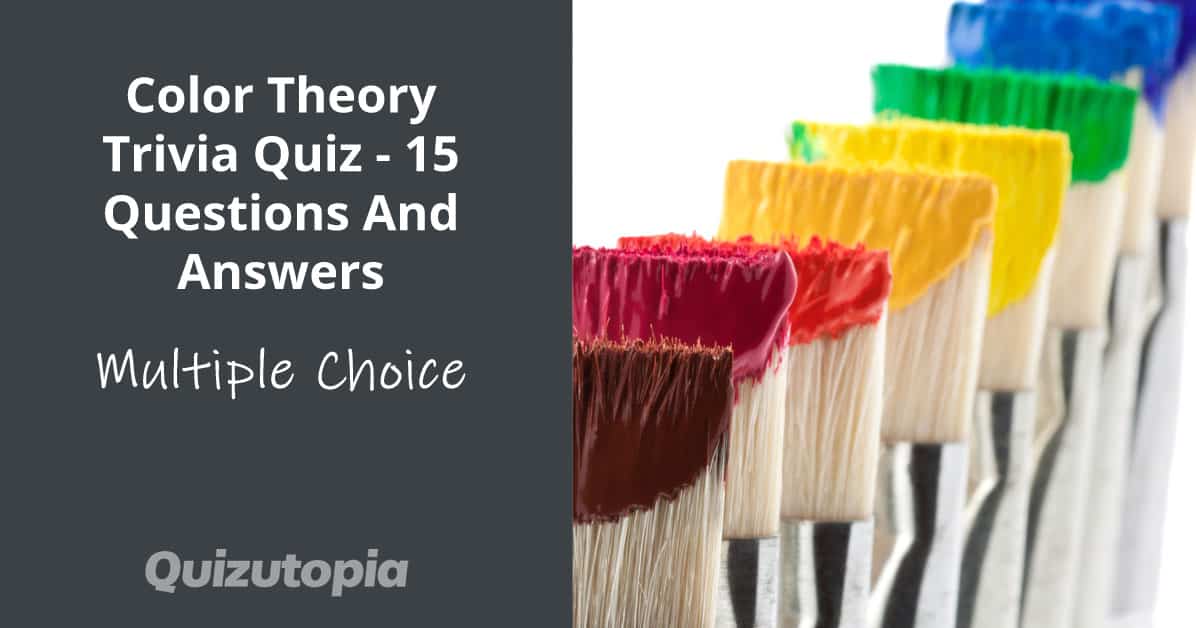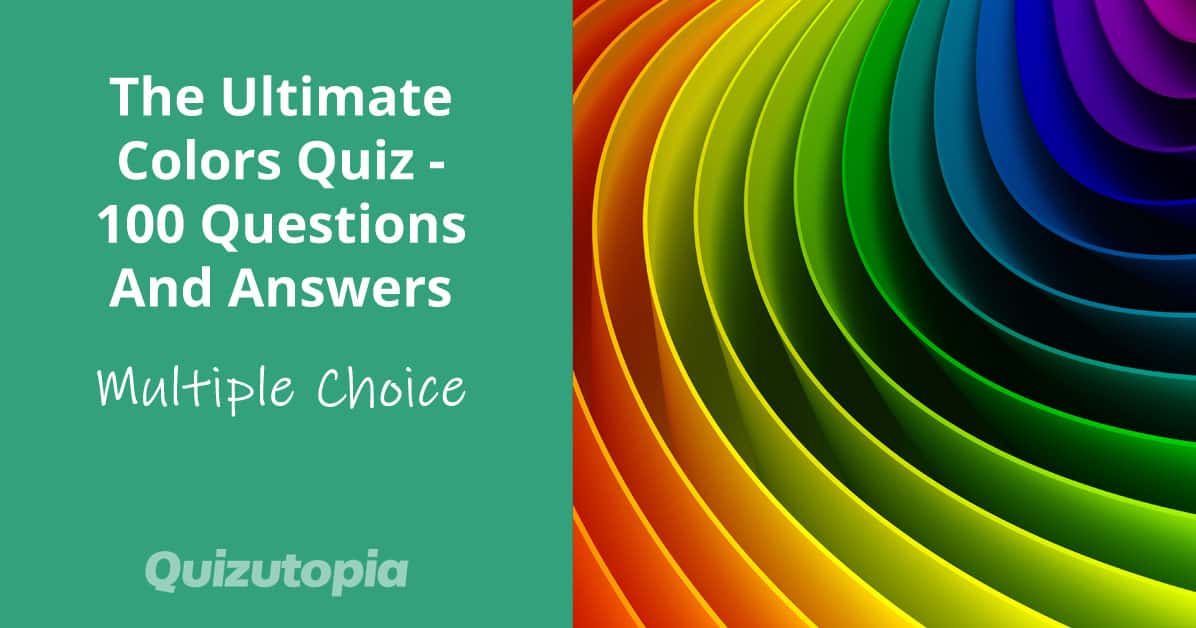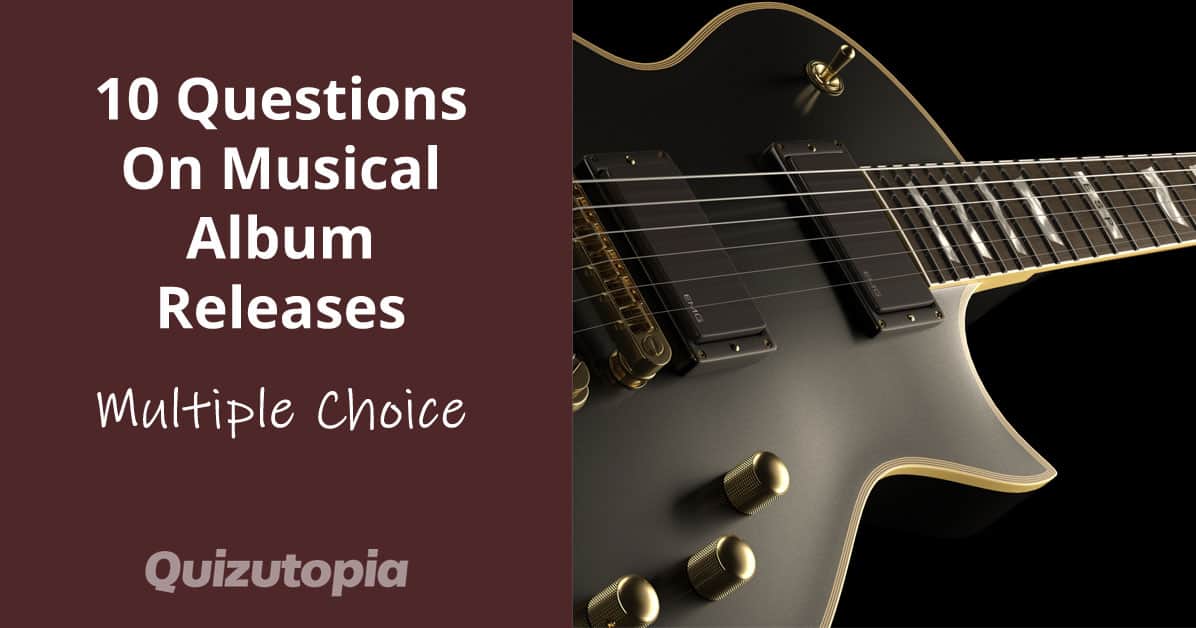Prepare to immerse yourself in the vibrant world of colors as we present to you the Color Theory Trivia Quiz! This quiz will challenge your understanding of hues, shades, and the captivating principles that govern the art of color. Whether you’re an artist, designer, or simply intrigued by the magical language of colors, this quiz will put your knowledge to the test.
In this quiz, we’ll delve into the fascinating realm of color theory, exploring concepts such as the color wheel, complementary colors, color harmony, and more. With 15 intriguing questions, you’ll have the opportunity to showcase your understanding of how colors interact, evoke emotions, and create visual impact.
So, grab your color palette, engage your visual senses, and let the Color Theory Trivia Quiz transport you into a world where shades come alive. Are you ready to prove your expertise and unravel the secrets of color theory?

Subscribe to our mailing list to receive FREE exclusive quizzes and offers!
- What are the three primary colors in the additive color model?
- Yellow, Magenta, Cyan
- Red, Green, Blue
- Red, Yellow, Blue
- Orange, Green, Violet
The correct answer is Red, Green, Blue.
The additive color model is used in electronic displays, and the primary colors are Red, Green, and Blue (RGB). - What are the three primary colors in the subtractive color model?
- Red, Yellow, Blue
- Red, Green, Blue
- Orange, Green, Violet
- Cyan, Magenta, Yellow
The correct answer is Cyan, Magenta, Yellow.
The subtractive color model is used in printing, and the primary colors are Cyan, Magenta, and Yellow (CMY). - Which color model is used in digital photography and computer displays?
- RGB
- RAL
- Pantone
- CMYK
The correct answer is RGB.
RGB (Red, Green, Blue) is the color model used in digital photography and computer displays, as it is an additive color model. - Which color model is used in printing?
- Pantone
- RGB
- CMYK
- RAL
The correct answer is CMYK.
CMYK (Cyan, Magenta, Yellow, and Key/Black) is the color model used in printing, as it is a subtractive color model.
- What does the “K” in CMYK stand for?
- Key (Black)
- Kagenta (Magenta)
- Kyan (Cyan)
- Kellow (Yellow)
The correct answer is Key (Black).
In the CMYK color model, K stands for Key, which represents black. It is called Key because the black plate is often used as a reference for aligning the other colors during printing. - What color is created when red and blue light are combined in the additive color model?
- Cyan
- Yellow
- Green
- Magenta
The correct answer is Magenta.
When red and blue light are combined in the additive color model, the resulting color is magenta. - What color is created when green and blue light are combined in the additive color model?
- Magenta
- Cyan
- Yellow
- Red
The correct answer is Cyan.
When green and blue light are combined in the additive color model, the resulting color is cyan. - What color is created when red and green light are combined in the additive color model?
- Cyan
- Yellow
- Magenta
- Blue
The correct answer is Yellow.
When red and green light are combined in the additive color model, the resulting color is yellow. - What color is created when all three primary colors are combined in the additive color model?
- Brown
- Gray
- White
- Black
The correct answer is White.
When all three primary colors (red, green, and blue) are combined in the additive color model, the resulting color is white. - What color is created when all three primary colors are combined in the subtractive color model?
- White
- Black
- Gray
- Brown
The correct answer is Black.
When all three primary colors (cyan, magenta, and yellow) are combined in the subtractive color model, the resulting color is black.
- Which color model is used to create color standards for various industries?
- CMYK
- RGB
- RAL
- Pantone
The correct answer is Pantone.
The Pantone color model is used to create color standards for various industries, including graphic design, fashion, and interior design. - What does the term “color temperature” refer to?
- The perceived warmth or coolness of a color
- The hue of a color
- The brightness of a color
- The saturation of a color
The correct answer is The perceived warmth or coolness of a color.
Color temperature refers to the perceived warmth or coolness of a color, often measured in degrees Kelvin (K). Higher color temperatures are cooler (bluish) and lower color temperatures are warmer (yellowish). - Which color harmony is based on colors that are opposite each other on the color wheel?
- Complementary
- Triadic
- Monochromatic
- Analogous
The correct answer is Complementary.
Complementary colors are those that are opposite each other on the color wheel, such as red and green or blue and orange. - Which color harmony is based on colors that are next to each other on the color wheel?
- Analogous
- Complementary
- Monochromatic
- Triadic
The correct answer is Analogous.
Analogous colors are those that are next to each other on the color wheel, such as red, orange, and yellow or blue, green, and violet.
- Which color harmony is based on three colors that are evenly spaced around the color wheel?
- Triadic
- Monochromatic
- Analogous
- Complementary
The correct answer is Triadic.
Triadic color harmony is based on three colors that are evenly spaced around the color wheel, such as red, yellow, and blue or orange, green, and violet.








